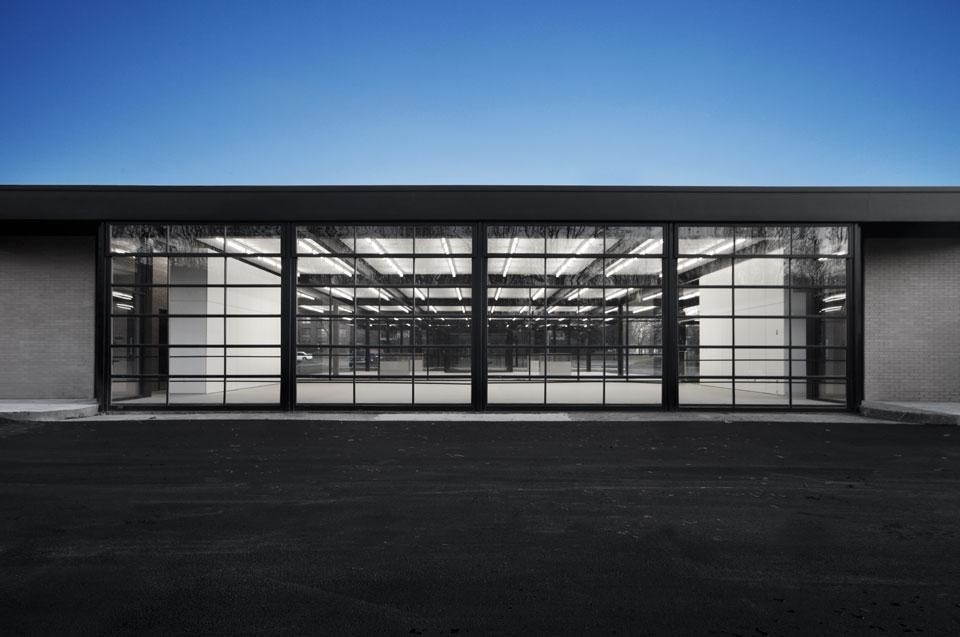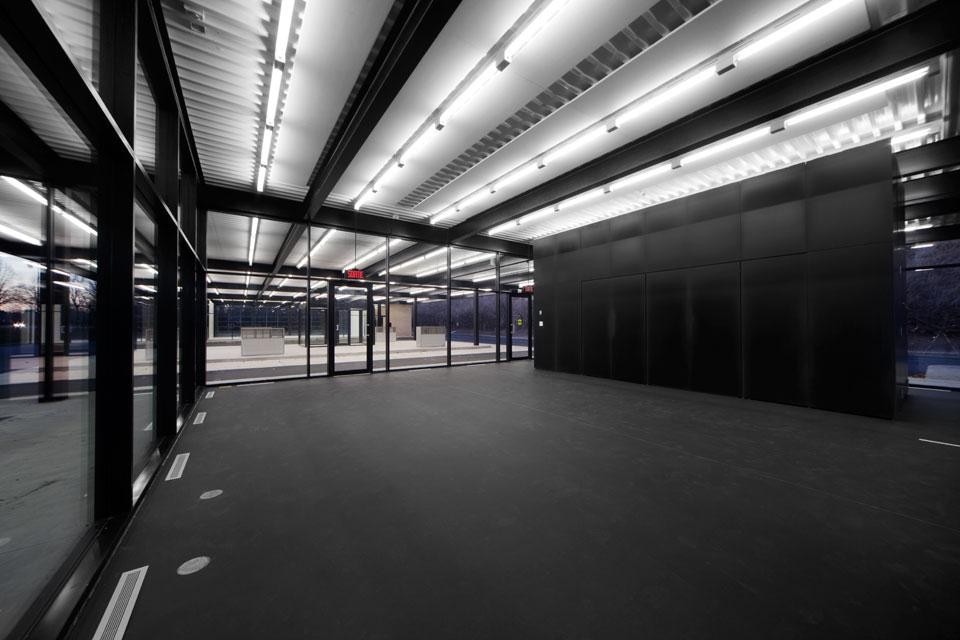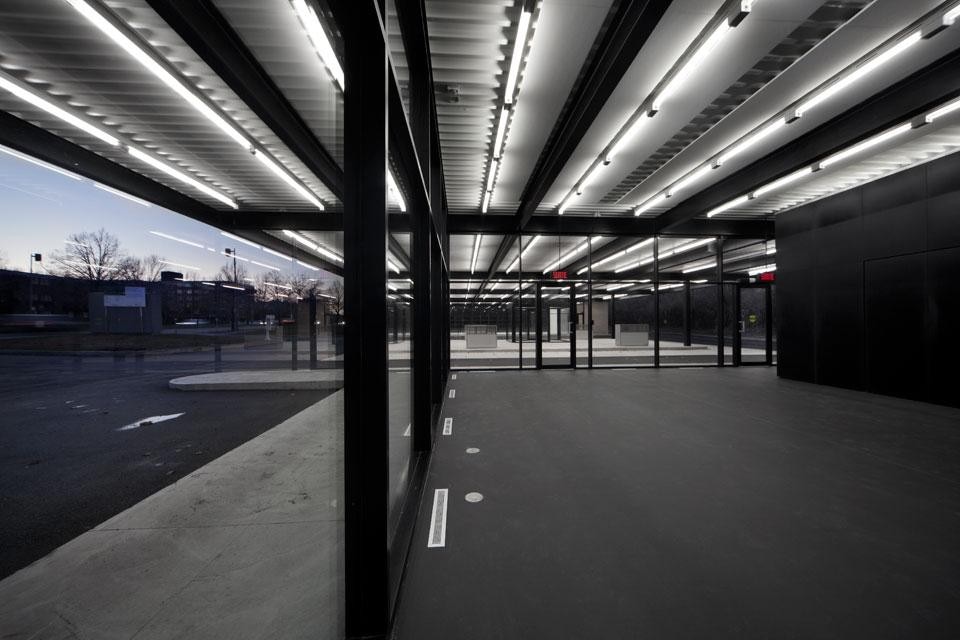Nun's Island is part of the Hochelaga archipelago, located southwest of Montreal. Its urbanization followed the opening of the Champlain bridge in 1962 under an ambitious master plan carried out by Metropolitan Structures, a real estate giant who had built numerous projects in Chicago with the collaboration of Mies van der Rohe. The new community included three high rise apartment buildings by Mies's office and it led, in 1966, to a commission from Standard Oil to design a prototypical gas station.
The station consists of two distinct volumes, one for car servicing and the other for sales, with a central pump island covered by a low steel roof that unifies the composition. The beams and columns were made of welded steel plates painted black, contrasting with the white enamelled steel deck and bare fluorescent tubes.
Over the years, the interiors have been modified to incorporate a car wash on the sales side. The finishings, built-in furniture and equipment have been replaced and the custom made pumps removed.
The senior group occupies the larger volume to the benefit of its sixty members who play bridge, prepare communal meals, dance or invite lecturers. Stacking chairs and tables allow multiple configurations of the room.
The younger group occupies the smaller volume. Teenagers meet there daily to play games, listen to music, organize parties and events under the supervision of educators.
Secondly, the architects sought to develop strategies for the new mechanical and electrical needs that would not affect the integrity of the heritage values. Sustainable solutions such as the new geothermal wells under the asphalt around the building provide the major part of the energy required to operate the centre, but they also radically diminish the size of the equipment and eliminate the need for a cooling tower on the roof of the building. The new stainless steel gas pumps are in fact air in take and out take devices that are linked by underground ducts to the HVAC system.


Mies van der Rohe gas station reconversion, Nuns Island
Client: Arrondissement de Verdun
Architect: Éric Gauthier
Team: Marc Paradis, Dominique Potvin, Jaime Lopez, Steve Montpetit
Engineers: Aecom
Builder: Norgéreq
Cost: 1.4 M $
End of project: September 2011



